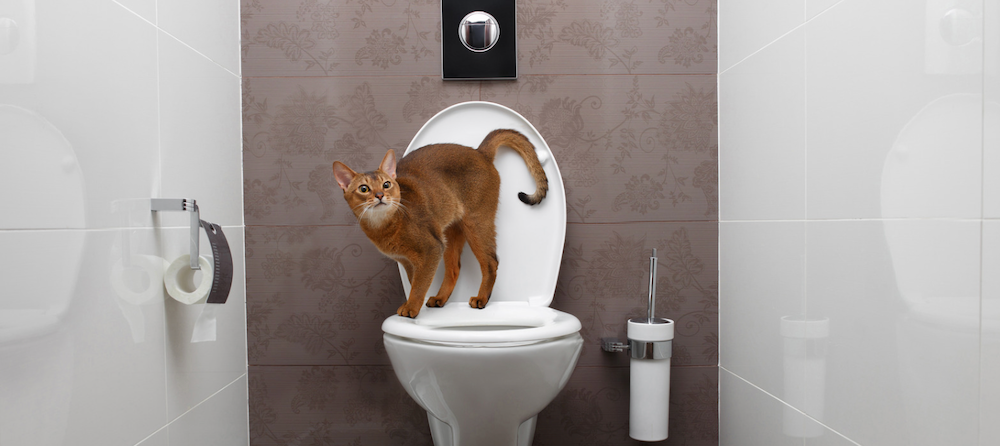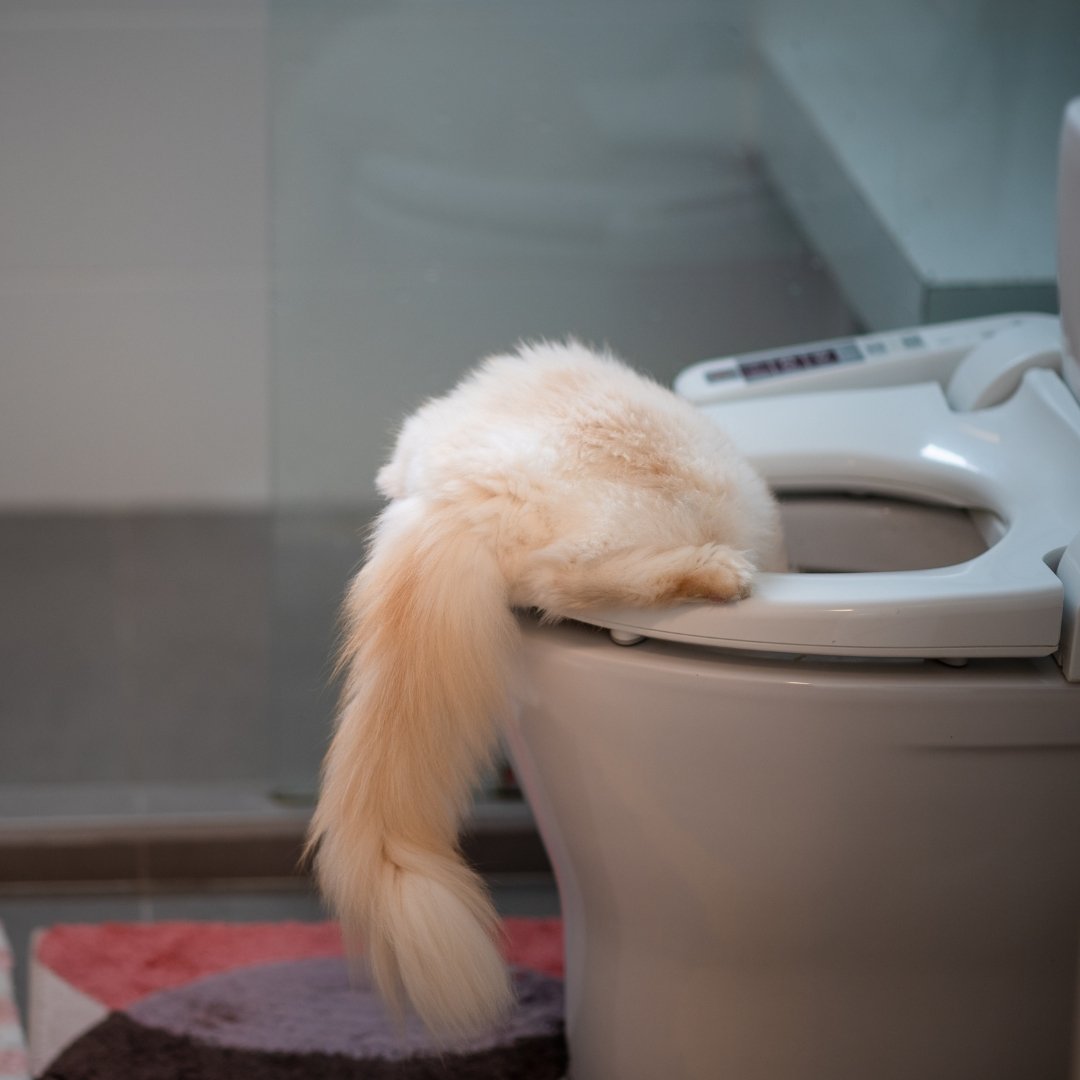Uncovering the Risks of Flushing Animal Waste Down the Toilet
Uncovering the Risks of Flushing Animal Waste Down the Toilet
Blog Article
They are making a number of good observations regarding Why you should never flush dog poop down the toilet as a whole in this content directly below.

When it comes to disposing of waste, particularly animal waste, lots of people often consider the hassle-free choice of flushing it down the commode. However, this seemingly simple remedy can have serious effects for the atmosphere and public health. In this short article, we'll discover why flushing pet waste down the commode is a negative concept and offer alternative methods for correct disposal.
Intro
Proper garbage disposal is crucial for maintaining environmental sustainability and public health. While it may appear harmless to purge animal waste down the commode, it can cause numerous concerns, both for the setting and human health.
Threats of flushing pet waste
Environmental influence
Flushing animal waste presents harmful germs and microorganisms into waterways, which can negatively affect marine ecosystems. These microorganisms can contaminate water resources and damage marine life, interfering with fragile environments.
Public health issues
Pet waste contains hazardous germs such as E. coli and Salmonella, which can posture major health threats to people. Purging animal waste down the bathroom can pollute water materials, leading to the spread of diseases and infections.
Alternatives to flushing
Rather than flushing pet waste down the toilet, there are several alternative disposal approaches that are more environmentally friendly and sanitary.
Composting
Composting animal waste is an environmentally friendly way to deal with it. By composting, raw material is broken down into nutrient-rich dirt, which can be made use of to feed gardens and plants.
Landfill disposal
Throwing away pet waste in a land fill is another alternative. While not as environmentally friendly as composting, it is a much safer option to flushing, as it protects against the contamination of water sources.
Pet garbage disposal systems
There are specific pet dog waste disposal systems available that securely and hygienically dispose of pet waste. These systems commonly use enzymes to break down waste and eliminate smells.
Steps to appropriate pet waste disposal
To make certain proper disposal of animal waste, comply with these actions:
Scooping and getting waste
Frequently scoop and bag animal waste using eco-friendly bags. This prevents waste from contaminating the setting.
Utilizing assigned waste bins
Dispose of bagged animal waste in designated waste containers, such as garden compost containers or garbage dump bins. Avoid flushing it down the bathroom at all prices.
Cleaning up litter boxes and pet areas frequently
Consistently tidy can and family pet locations to prevent the build-up of waste and microorganisms. Usage pet-safe cleaning products to preserve health.
Benefits of correct disposal methods
Taking on appropriate disposal techniques for animal waste offers numerous advantages:
Minimized environmental pollution
Proper disposal methods minimize the threat of environmental pollution, protecting rivers and ecological communities from contamination
Lessened threat of water contamination.
By avoiding flushing animal waste down the commode, the risk of water contamination is substantially lowered, safeguarding public health.
Improved sanitation and hygiene
Correct disposal techniques advertise much better sanitation and health, producing a more secure atmosphere for both human beings and animals.
Final thought
To conclude, flushing pet waste down the commode is damaging to the setting and public health. By adopting alternative disposal approaches and complying with proper waste management practices, we can lessen the negative impact of pet waste and contribute to a cleaner, healthier earth.
Why You Should Never Flush Cat Poop Down the Toilet
A rose by any other name might smell as sweet, but not all poop is created equal. Toilets, and our sewage systems, are designed for human excrement, not animal waste. It might seem like it couldn’t hurt to toss cat feces into the loo, but it’s not a good idea to flush cat poop in the toilet.
First and foremost, assuming your cat uses a litter box, any waste is going to have litter on it. And even the smallest amount of litter can wreak havoc on plumbing.
Over time, small amounts build up, filling up your septic system. Most litter sold today is clumping; it is made from a type of clay that hardens when it gets wet. Ever tried to scrape old clumps from the bottom of a litter box? You know just how cement-hard it can get!
Now imagine just a small clump of that stuck in your pipes. A simple de-clogger like Drano isn’t going to cut it. And that means it’s going to cost you big time to fix it.
For an amusing, graphic tale of what happens when you flush too much litter down the toilet all at once, take a few minutes to read Gene Weingarten’s 2017 Washington Post column “So that’s what happens when you flush cat litter down the toilet.”
Parasitic Contamination
Believe it or not, your healthy kitty may be harboring a nasty parasite. Only cats excrete Toxoplasma in their feces. Yet it rarely causes serious health issues in the cats that are infected. Most people will be fine too if infected. Only pregnant women and people with compromised immune systems are at risk. (If you’ve ever heard how women who are expecting are excused from litter cleaning duty, Toxoplasma is why.)
But other animals may have a problem if infected with the parasite. And human water treatment systems aren’t designed to handle it. As a result, the systems don’t remove the parasite before discharging wastewater into local waterways. Fish, shellfish, and other marine life — otters in particular — are susceptible to toxoplasma. If exposed, most will end up with brain damage and many will die.
Depending on the species of fish, they may end up on someone’s fish hook and, ultimately on someone’s dinner plate. If that someone has a chronic illness, they’re at risk.
Skip the Toilet Training
We know there are folks out there who like to toilet train their cats. And we give them props, it takes a lot of work. But thanks to the toxoplasma, it’s not a good idea.
Leave the toilet to the humans, and accept your future litter cleaning duty.

Consistently tidy can and family pet locations to prevent the build-up of waste and microorganisms. Usage pet-safe cleaning products to preserve health.
Benefits of correct disposal methods
Taking on appropriate disposal techniques for animal waste offers numerous advantages:
Minimized environmental pollution
Proper disposal methods minimize the threat of environmental pollution, protecting rivers and ecological communities from contamination
Lessened threat of water contamination.
By avoiding flushing animal waste down the commode, the risk of water contamination is substantially lowered, safeguarding public health.
Improved sanitation and hygiene
Correct disposal techniques advertise much better sanitation and health, producing a more secure atmosphere for both human beings and animals.
Final thought
To conclude, flushing pet waste down the commode is damaging to the setting and public health. By adopting alternative disposal approaches and complying with proper waste management practices, we can lessen the negative impact of pet waste and contribute to a cleaner, healthier earth.
Why You Should Never Flush Cat Poop Down the Toilet
A rose by any other name might smell as sweet, but not all poop is created equal. Toilets, and our sewage systems, are designed for human excrement, not animal waste. It might seem like it couldn’t hurt to toss cat feces into the loo, but it’s not a good idea to flush cat poop in the toilet.
First and foremost, assuming your cat uses a litter box, any waste is going to have litter on it. And even the smallest amount of litter can wreak havoc on plumbing.
Over time, small amounts build up, filling up your septic system. Most litter sold today is clumping; it is made from a type of clay that hardens when it gets wet. Ever tried to scrape old clumps from the bottom of a litter box? You know just how cement-hard it can get!
Now imagine just a small clump of that stuck in your pipes. A simple de-clogger like Drano isn’t going to cut it. And that means it’s going to cost you big time to fix it.
For an amusing, graphic tale of what happens when you flush too much litter down the toilet all at once, take a few minutes to read Gene Weingarten’s 2017 Washington Post column “So that’s what happens when you flush cat litter down the toilet.”
Parasitic Contamination
Believe it or not, your healthy kitty may be harboring a nasty parasite. Only cats excrete Toxoplasma in their feces. Yet it rarely causes serious health issues in the cats that are infected. Most people will be fine too if infected. Only pregnant women and people with compromised immune systems are at risk. (If you’ve ever heard how women who are expecting are excused from litter cleaning duty, Toxoplasma is why.)
But other animals may have a problem if infected with the parasite. And human water treatment systems aren’t designed to handle it. As a result, the systems don’t remove the parasite before discharging wastewater into local waterways. Fish, shellfish, and other marine life — otters in particular — are susceptible to toxoplasma. If exposed, most will end up with brain damage and many will die.
Depending on the species of fish, they may end up on someone’s fish hook and, ultimately on someone’s dinner plate. If that someone has a chronic illness, they’re at risk.
Skip the Toilet Training
We know there are folks out there who like to toilet train their cats. And we give them props, it takes a lot of work. But thanks to the toxoplasma, it’s not a good idea.
Leave the toilet to the humans, and accept your future litter cleaning duty.

We had been made aware of that article about 4 Reasons Why Dog Poop Cleanup is Important from an associate on our other website. Those who appreciated our article if you please don't forget to share it. We cherish your readership.
Call Report this page